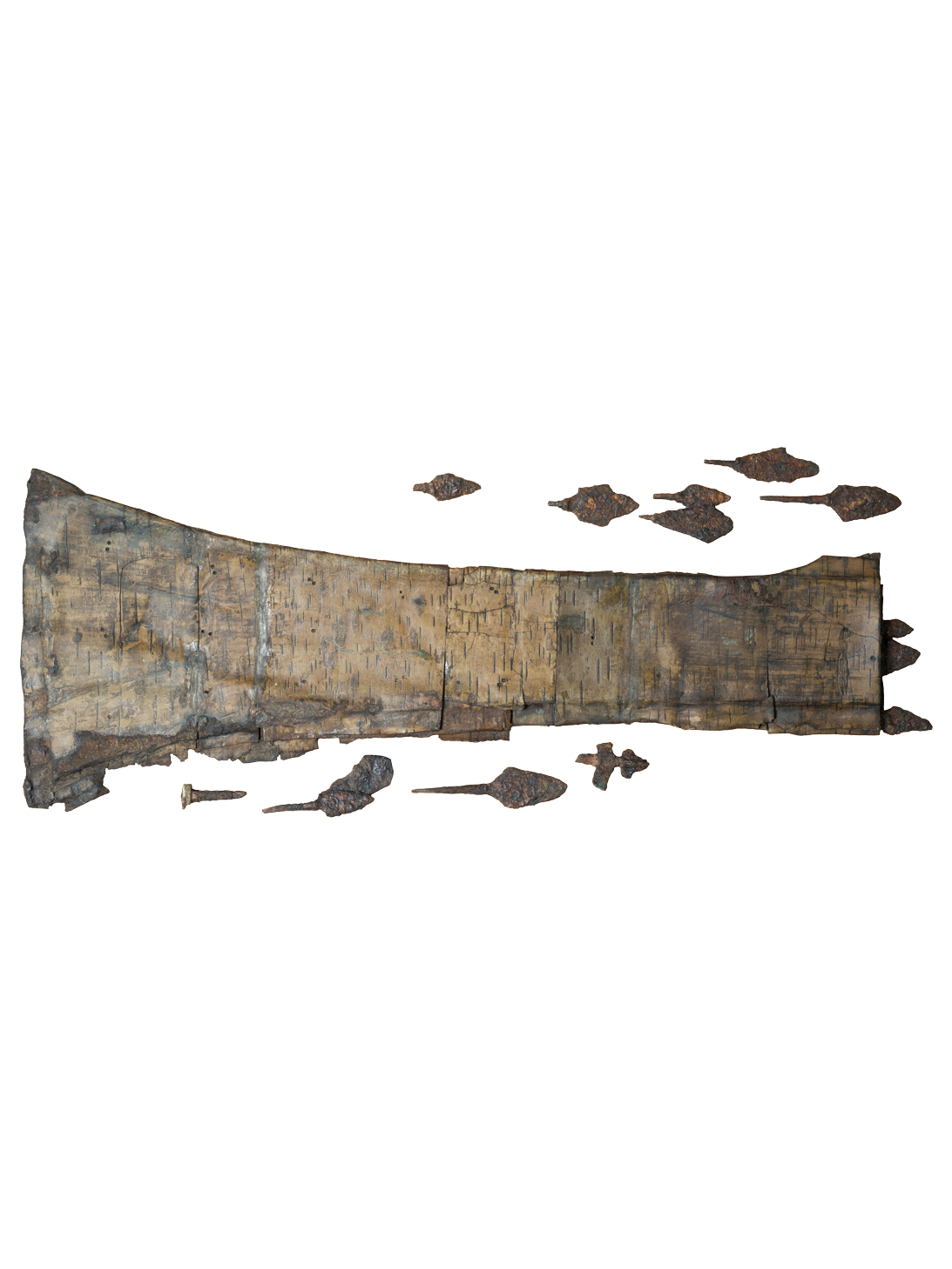Quiver and arrowheads

The burial of a noble Circassian was found near stanitsa Belorechenskaya on Kuban during excavations of famous archeological complex consisting of 85 burial barrows. A half-burnt skeleton of a man was lying in a copper coffin with armament supplies – a saber and a quiver with arrows, fragments of leather belts decorated with silver plaques that seem to be remains of a sword knot.
Quivers for keeping arrows were made of birch bark or phloem and in some cases of wood. They were covered over with leather or fabric, sometimes decorated with sewing, iron plaques or bone plates with carved ornaments. They have an elongated cylindrical form with extending lower part made to protect arrows’ feather from crumpling as they were put to the quiver heads up. On the top quivers usually have oval cover with a ring-handle. Quivers were hanged with straps on belts.
Birch bark remains in soil badly that is why findings of quivers are quite rare. Arrowheads and a quiver from the burial barrow #1 have a typical form for Mongolian nomads of the XIII-XIV centuries.
The burial of a noble Circassian was found near stanitsa Belorechenskaya on Kuban during excavations of famous archeological complex consisting of 85 burial barrows. Burial barrows group was discovered and researched by outstanding Russian archeologist professor of Petersburg’s University, corresponding member of the Imperial St. Petersburg Academy of Sciences Nikolai Ivanovich Veselovsky in the late XIX century. Several thousands of artifacts were found in burial barrows - items of high artistic merit made of silver and gold, weapons and domestic implements of Adyghe tribes as part of of the Golden Horde’s population.
In the burial barrow #1 a half-burnt skeleton of a man was lying in a copper coffin with armament supplies typical for Mongolian nomads of the XIII_XIV centuries – a saber and a quiver with arrows, fragments of leather belts decorated with silver plaques that seem to be remains of a sword knot.
Quivers for keeping arrows were made of birch bark or phloem and in some cases of wood. These materials remain in soil badly that is why findings of quivers are quite rare. They were covered over with leather or fabric, sometimes decorated with sewing, iron plaques or bone plates with carved ornaments. Quivers have an elongated cylindrical form with extending lower part made to protect arrows’ feather from crumpling as they were put to the quiver heads up and on the top quivers usually have oval cover with a ring-handle. Quivers were hanged with straps on belts.
